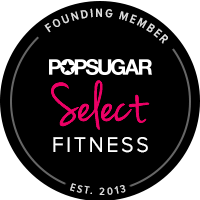Happy Thursday! Wow, today is going to be a busy day, so I’m going to try and keep this post short and sweet (try is the “key” word!). After CrossFit this morning, I am heading to our new house to spend the day interviewing different painters, meeting with our contractor and another one for our guest bathroom, while my husband meets with clients in the area. We are excited to get the ball rolling with fixing up our new house, but boy, is it OVERWHELMING! I’m glad exercise is my go-to stress reliever, because if not, I don’t know how I would handle it (not to mention we still haven’t found anyone to rent our current place)!
Speaking of exercise, I PR’d on my “Fran” time (one of CrossFit’s benchmark workouts) 1 minute yesterday! I was so pumped! The last time I did Fran was in October and I completed it in 8 minutes and 12 seconds, and yesterday I was able to finish in 7 minutes!
Anyhow, enough venting and CrossFit talk, it is time for Thursday Tidbits! It seems like it has been a while since I had my regular Thursday Tidbits post, so I’m anxious to pick it back up again. Lately, I have been hearing friends and family members say just because they are eating something considered healthy, like roasted almonds, all natural peanut butter, mixed nuts, whole grain crackers, juicing etc, they don’t have to worry about how much they are eating. The food is healthy or even better, it’s organic, so they believe they can eat as big of a portion as they want. Wrong!
Every food contains calories and no matter how healthy you eat, the calories will still add up. If you aren’t looking to lose weight or managing your weight is not a problem, then you are obviously eating the right amount of food. But, if you have plateaued and are struggling to lose those last few pounds, you may need to reevaluate your portions sizes. The tried and true way to lose weight effectively and successfully is calories in vs. calories out.
I’ve put together Five Simple Tips for controlling portion sizes. But, one thing I should stress is don’t skimp on eating the right amount of nutrients, i.e. protein, healthy fats, good carbs, fruit and veggies, especially if you are really active and engage in vigorous activity on a daily basis or are pregnant.
1. Serving sizes: When purchasing a food, look at the serving size on the nutrition label. When eating it, follow the serving size instead of mindlessly pouring it into a bowl, i.e. nuts or cereal, so you can control how much you are consuming. For example, a typical serving size for cereal is ¾ to 1 cup, for nuts, it is 1/4 cup. For fruit, think about the size of a tennis ball being the appropriate size, not the jumbo size nectarine or peach that is really two servings! Don’t get me wrong, I love eating HUGE peaches and nectarines in the Summer, but just know how much you are eating and account for it if you are trying to watch your weight. As an added bonus, by eating the right portion you will save money, since you won’t need to purchase the food as frequently (except for fresh produce).
2. Measuring cups/spoons: For foods that you buy in bulk, such as whole grains, cereal, granola, yogurt, nut butters, use your measuring cups or spoons for an exact portions, instead of guessing. Most people underestimate their portion sizes and the amount of calories they are consuming, which can cause frustration on why the scale is not moving, so it’s better to be accurate.
3. Scale: If it helps, purchase a small food scale that weighs in grams and ounces. You can use this to measure out your protein and also whole grains. For meat, one serving is 3-4 ounces (the size of a deck of cards). Without a scale, it can be hard to measure out exactly the right amount. I use my scale for not only measuring our protein, but for our coffee in the morning, so we only brew just enough.
4. Smaller plate: If you can’t seem to measure your food out, use a smaller plate for your meals and divide it into thirds (¼ protein, ¼ whole grain carbohydrates and ½ vegetables). The typical size of a dinner plate is 11-12 inches, which has increased in the last 30 years. Purchase smaller plates (9 inches) to control portions. It will help to trick your brain into thinking you are eating more!
5. Handful: If using measuring cups or spoons and weighing your food is not your forte, go back to the basics and just use your hand as a guide. A simple, but good rule of thumb is everything on your plate should be the size of your handful (not the circumference of your fist!). Think of your protein as being one handful, your carbs being another handful and your veggies being two heaping handfuls.
Also, in case you didn’t see it yesterday, here is another home workout, CrossFit Home or Travel WOD #8!
Enjoy your day and this beautiful Spring weather (if it is nice where you live)!
Questions:
Do you eat the recommended serving size of a food?
Do you watch your portion sizes?
Do you measure or weigh your food, or do you just eat until you are full?













So exciting getting a new house, but I know how overwhelming it can be, especially with a little one.
I love all of your tips for portion control. I am a huge believer in everything in moderation. I always read the serving size on the sides of boxes, I think that is so important. I use scales, measuring cups, and we always use smaller plates. I try to make sure I never eat out of a box, everything must be put in a bowl or on a plate. 🙂
Thanks! We are excited, but definitely overwhelmed by it all! I’m trying to take it one step at a time at this point.
I’m the same way, I try to eat everything in a bowl or plate, but my weakness is getting Kettle Corn at the farmer’s market. I just have to eat it out of the bag! 🙂
Love this post. Jam packed with information.
I never count calories on healthy things which I now know I definitely should.
Thank you!
Love this post. Jam packed with information.
I never count calories on healthy things which I now know I definitely should.
Also, I’m an interior designer so if you feel frazzled or need help, let me know. Happy to help..!
Awesome! I would love some help! I will probably be contacting you soon, thanks!
I completely agree with you on this! Especially when dealing with nuts, avocado, and oils, for example. I know they are healthy, but I keep portion sizes in mind when eating them. I tend to not worry to much about veggies though.
I never really watch portion sizes when it comes to veggies, which is a nice bonus to eating them!
We have several sets of measuring cups. Once we open a bulk product and put it in a storage container we also put the appropriate size measuring cup in the bin. That way there is no excuse for going overboard.
I love that idea! I might have to do that when all of our bulk items when we move!
Great tips Melissa and so true! I too hear that often that people think they can eat more just because it’s healthier. Big misconception! Hope things go well today at your new house!
Thanks, Giselle! Everything went well, now it is the hard part…decision and budget time!
Honestly, the only thing I ever actually measure out is the coconut milk coffee creamer that I use in my coffee. Everything else, I go by the rule of half my plate with veggies and fruit and the other quarters of the plate with grains and meat (if I’m eating meat that is!)
I do the same with my half and half that I add to my coffee and pretty much just measure my protein.